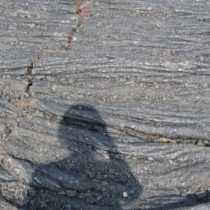Landscape Architecture for Landscape Architects › Forums › GENERAL DISCUSSION › Design-Build mortar question
- This topic has 1 reply, 7 voices, and was last updated 13 years, 6 months ago by
 Boilerplater.
Boilerplater.
-
AuthorPosts
-
September 21, 2010 at 4:28 pm #167700
 Vella ChanParticipantAfter years of just doing design in an office and never seeing it after it goes out to bid, I’m doing a design-build on my own and need some confirmation that I’ve made the right choice here.
Vella ChanParticipantAfter years of just doing design in an office and never seeing it after it goes out to bid, I’m doing a design-build on my own and need some confirmation that I’ve made the right choice here.Project description: I’m going to put 1″ bluestone on an existing 100 SF concrete patio (co-op apt). Paver sizes are 12×12, 12×18, 12×24, 18×18 (nominal). I’ll put down a 1/2″-1″ mortar setting bed, depending on actual stone thickness. I asked the stone yard guys if thin-set mortar is okay since I chose pieces that were an inch or less thick but they said no, use regular mortar. Therefore, looking at what’s readily available at Home Depot, I found Sakrete Sand Mix – “A quality mixture of sand and cement designed for the overlaying of damaged concrete, and for use as a bedding mix for flagstone, slate or brick.’ I just want to make sure that I’m using the right stuff. No need to go with Type N or S mortar. I’ll just mix one bag at a time in a bucket and set a few stones at a time. Am I okay with all this?
Also, what should I know about cutting the bluestone around some pipes, wall detail brickwork, etc.? Wet saw (is that just for tile?) or dry cut circular saw w/diamond blade? What should I discuss when I ask someone to cut the stone to size? I’m not going to invest in buying a saw since this might be my only DIY design-build job plus I live in a tiny studio apt. Can I just advertise on Craigslist for the few cuts I have to make? I don’t know any contractors. I don’t want to spend time going back to the stone yard. What should I do?Your suggestions will be helpful as I try my hand at installing a design to launch my biz. If I have a client with a bigger budget in the future, I’ll definitely hire a contractor. Thanks!September 21, 2010 at 5:03 pm #167708 BoilerplaterParticipant
BoilerplaterParticipantYou really might be better off hiring a mason for this and watching them closely to see how THEY do it. Since you are using thin pieces and you are in a climate with a lot of freeze-thaw cycles, make sure you have a thick base, 4-6″, thoroughly compacted. On a home project I did when I lived in NJ, I cut bluestone with a regular circular saw with a masonry blade. It makes a LOT of dust, so have lots of dust masks ready. A more powerful (higher amp) saw could make it easier. Trying to get it around pipes and irregular brickwork can get really involved and I’d recommend amending your design to avoid those areas. Wet saws can do more detailed cuts. I knew a guy who would do these elaborate mosaics with cut pavers and he used a wet saw. Very tedious, slow-moving work! Learning how to do stuff like this is very useful for creating designs that are efficient to actually build. Good luck!
September 21, 2010 at 5:40 pm #167707 Jordan LockmanParticipant
Jordan LockmanParticipantDid you try calling Sakrete or another manufacturer? They make the product and can tell you what it is designed for.
September 21, 2010 at 6:41 pm #167706 Jason T. RadiceParticipant
Jason T. RadiceParticipantI’ve seen this done by using slurry over sand bed system, in turn over concrete. The setting is 3 parts masonry sand and 1 part portland. The slurry is 1/2 bag of portland for 5 gal of water. Use acid/brick wash to clean efflourescence/surface mortar 3 days after install.
Never having actually done it myself, I would probably hire a contractor to see how to do it. It’s more than just following directions, as there are “finess” to a stone install. You can try to find a how-to book or two at your local B&N or Borders for visual reference.
September 21, 2010 at 9:16 pm #167705 Thomas J. JohnsonParticipant
Thomas J. JohnsonParticipantUse a masonry saw, home depot might rent them, or use a diamond blade on a circular saw or grinder. You don’t have to cut all the way through. Cut 1/2 – 3/4 through and use a chisel / hammer to snap it off…
Read this and go to town! Have fun! Let us know how it turns out…
http://www.the-flagstone-experts.com/Flagstone-Installation.html
September 21, 2010 at 9:32 pm #167704 Thomas J. JohnsonParticipant
Thomas J. JohnsonParticipantKnee Pads! Don’t forget knee pads…
September 22, 2010 at 11:24 am #167703 Andrew Garulay, RLAParticipant
Andrew Garulay, RLAParticipantThe way it is done in my neighborhood is by setting it in at least an inch of mortar bed. You have to remember that the stone is not going to be exactly an inch thick unless it is saw cut. You have to have enough of a mortar bed to not only set the stone, but to give way to a thicker stone so that the surface is even. Set the stone but do not grout the joints as you go. Finish seting the stones, let them cure for a couple of days and then grout the joints all at once.
Clean the mortar off the surface of the stone as you go with a wet cloth to make your final clean up a hell of a lot easier in the end (cleaning mortar is very difficult, cleaning residue is not so bad).
On a 100SF slab there is probably not an expansion joint and maybe not any control joints. If there are, you need to carry those to the finished surface or you will have broken stones (nobody likes their stones broken). One inch thick bluestone on a slab on a solid mortar bed will be perfectly safe for patio use.
Also, bagged pre-mixed box store mortar can be a bit weak. You would be safer to mix your own or at least add cement to the mix.
October 1, 2010 at 11:04 pm #167702 Mark LerchParticipant
Mark LerchParticipantFor 1″ bluestone you can get by with a 4″ grinder and a good diamond blade. Sakrete is weak as mentioned. I would use 5 shovel masonry sand, 1 shovel Portland cement, .5 shovel lime ratio mix. The sand is important. If its the wrong type, you won’t get the loft necessary and it will make levelling the patio very difficult. The consistency of the mix is also important. For a mason its second hand. You will need to find the right consistency. Too thin and will lack proper loft, too dry and its just hard to set. I would also recommend a bonding agent be applied to the old surface and mixed in with the mortar. It looks like milk and is sold in bottles. Be sure that put enough mortar down to get a good bond and the previous patio pitched the water away from all structures so you don’t inherit any former problems.
October 2, 2010 at 2:02 am #167701 Andrew Garulay, RLAParticipant
Andrew Garulay, RLAParticipantI second the 4″ grinder as being effective if you are not making a career out of ot. Br sure to set it up so that the dust shoots away from you are you cut or you will toast the grinder a lot faster. When it gets real hot, give it a rest or you’l burn it out. Start on the far side of the cut on the first grind because as soon as the dust flies you won’t see the line you are trying to follow where the dust is shooting. Don’t try to cut through all at once. Glide the blade back and forth without pushing down hard – let the blade do the work not your arms or the grinder motor.
-
AuthorPosts
- You must be logged in to reply to this topic.

